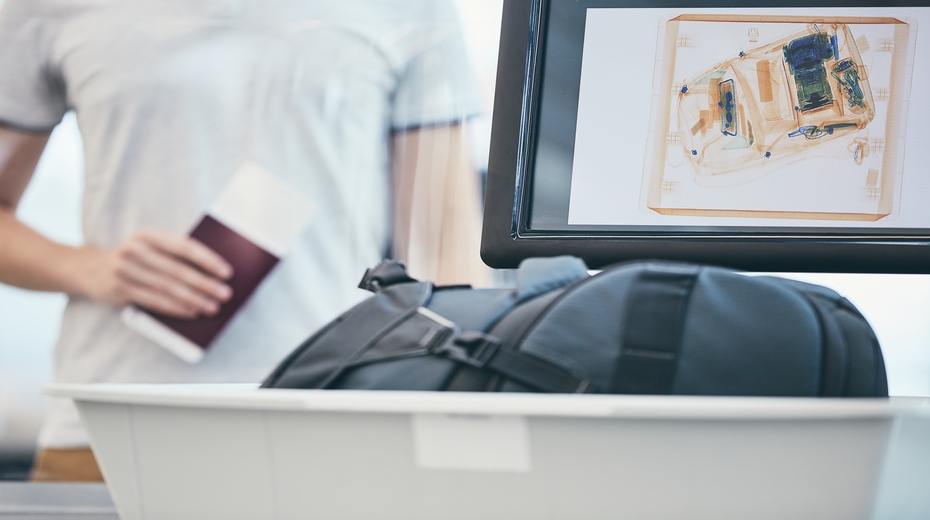

What is non-intrusive inspection and how is it being implemented in Colombia?
With the purpose of providing comprehensive and high-tech solutions for the defense and security of our country; Protactics is providing a relevant component for the implementation of non-intrusive inspection in ports, aeronautical operators, airports, cargo agencies and mission-critical facilities, such as military bases and similar entities.
And if you've ever wondered what happens behind closed doors in places that guard small and heavy cargo, the answer is simple:
Everything is happening, but initially they are equipping themselves with state-of-the-art technology to regulate and monitor what goes in and out in a non-intrusive way, with high-energy X-rays.
These guarantee the viewing of images in real time, without having a contact. It is only necessary to visualize (the package) through a screen or technological element capable of identifying different types of substances and elements; to distinguish colors, chemical agents, narcotics, and even explosives.
Containers, packages, suitcases, bags, boxes, packaging and other materials that are used for loading and packing, have been the target of X-ray equipment, which has been operating in the world for 60 years. However, like everything, this is a technology that has also evolved over time.
It has learned to discriminate between organic and inorganic elements, to distinguish colors, new zooms of up to 50X have been implemented, to look in detail at the products that are moving around the world.
Our Role
Protactics is today one of the companies that is distributing its technology to the venues that receive thousands of passengers every day: airports, a clear example of how X-rays are monitoring humanity and regulating security. However, this is only one of the niches of the organization, because, as we mentioned at the beginning, technology is available and open to any company that requires it, being accessible, enhancing effectiveness, reducing time and streamlining processes.
How does it work at airports?
Before boarding any flight, to or from any destination, all passengers must undergo an inspection, both in their carry-on baggage and in their hold baggage.
From there, multiple security controls emerge that must be passed to finally board, with the peace of mind of not carrying any prohibited item in your luggage.
The scanners are recommended by the World Customs Organization (WCO) to facilitate international trade and inspect that the process is done efficiently, safely, quickly and taking care of the integrity of humanity.
In Colombia, thanks to Law 1450, article 88, paragraph 2, "port concessionaires, in coordination with the control authorities, have technological equipment that allows the detection of smuggling, drug trafficking and illegal trade." At the same time, after the implementation of Decree 2155, the intersectoral commission for the implementation and monitoring of non-intrusive inspection systems was created, which defined, once and for all, the standards and regulations that currently govern the country and to which we adhere.
The novelty of the market: Artificial Intelligence (AI)
Like all areas, AI is also impacting the security sector, and is making it possible to autonomously identify threats such as:
Narcotics.
Explosives.
Dense elements.
Species.
Foreign exchange.
And others (depending on the preference or need of the customer or the company).
Curiously, the world of security goes hand in hand with the doctor, and it is evident when talking about X-rays and CT scans, which today allow you to see an element in three dimensions, rotate it and review it as and when you want; It's the same with security.
The world's air terminals are already migrating to the technology with which tomography originated; This means that passengers do not have to remove, for example, their laptop from the suitcase, and other items such as liquids, which means shorter queue times and efficiency in viewing.
¿Cuál es el rol de la IA?
Con ella, pueden programar a las máquinas para que se identifique lo que el cliente quiera.
Fun fact: after September 11, 2001, when the world came to a standstill after the attack on the Twin Towers, located in New York (USA), and which, after several explosives that were detonated in different aircraft, caused the death of 2,753 people; AI, X-rays, and non-intrusive inspection technologies in general have been key to preventing similar events.
In addition, it also mitigates the problem of wildlife trafficking, in countries with high rates of related crimes, and the same happens with seeds, weapons, medicines, drugs, currency, etc.
What's new in the country?
Protactics was the first company to deliver tomography equipment to the National Police, which will be used to monitor the security of El Dorado International Airport, which transported, in 2022, 36 million passengers and between January and October (of the same year) alone 632,688 tons of cargo were mobilized.
This new machine will be installed soon and will be used for the surveillance of critical flights, classified as such, due to the incidence of drug trafficking crime, so it will significantly reduce cases and crime.
Non-intrusive inspection can be implemented here
Checkpoint.
Customs.
Mail and small packages.
Large packages and small cargo.
People scan.
Pallets and loading.
Networks and operator support.
Cargo and vehicle inspection.
Trace detection.
These are the categories
Cargo: Inspects large cargo and can be deployed on fixed or mobile elements.
E-cargo: inspects boxes or packages that fit in tunnels of up to 1 m x 1.80 m. It is installed in airlines and cargo agencies.
Small tunnels: They inspect carry-on suitcases, bags, boxes, packages and have all the technology so that the items don't have to be opened.
Trace or explosive detectors: it is an element that passes through suitcases, vehicles, packages and is then inserted into equipment that detects whether or not the traces contain components of narcotics and explosives.
Raman equipment: mobile laboratories the size of a cell phone, which extract a sample of what is to be checked and detect what the chemical elements are. In addition, the package or cargo is checked through laser technology, without having to open it.